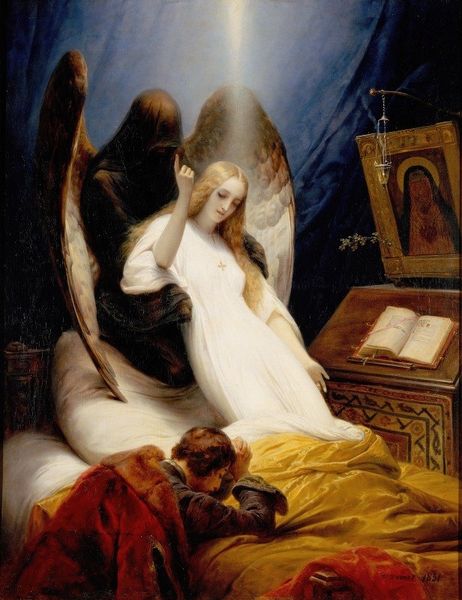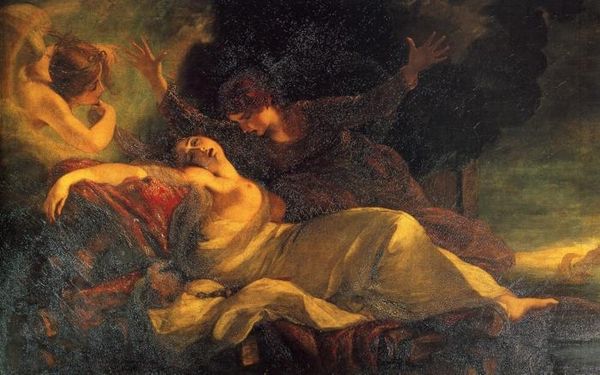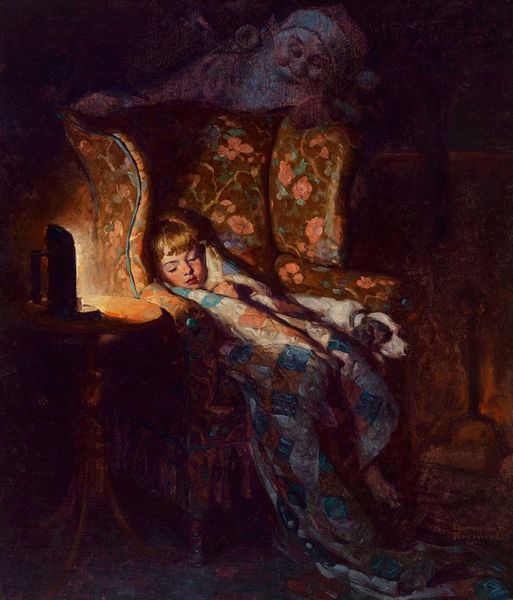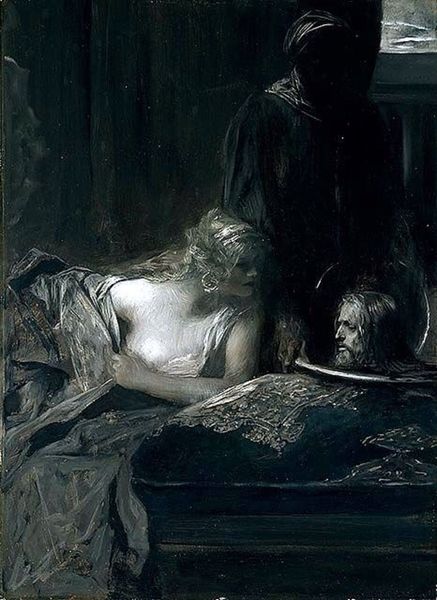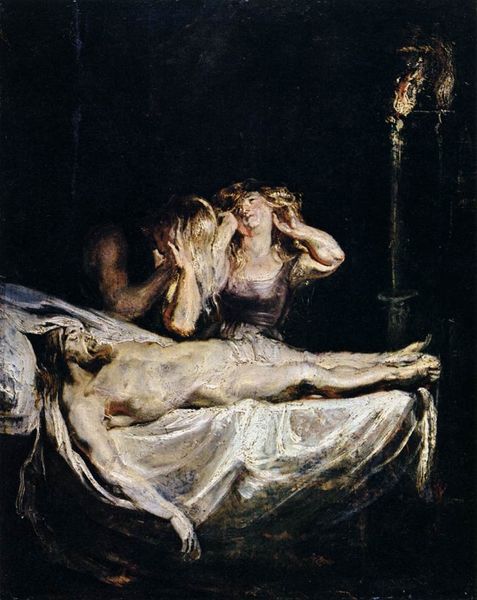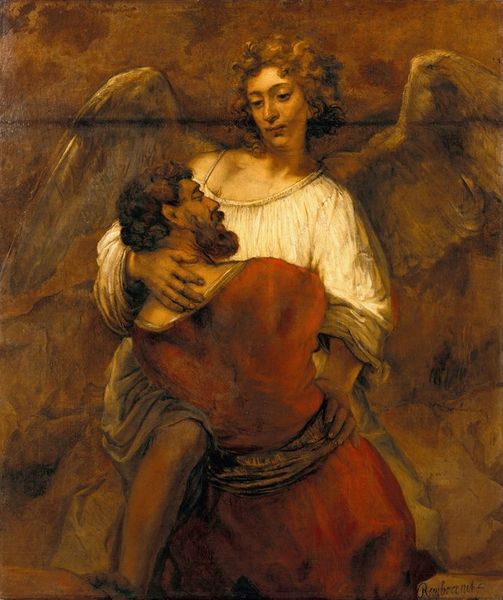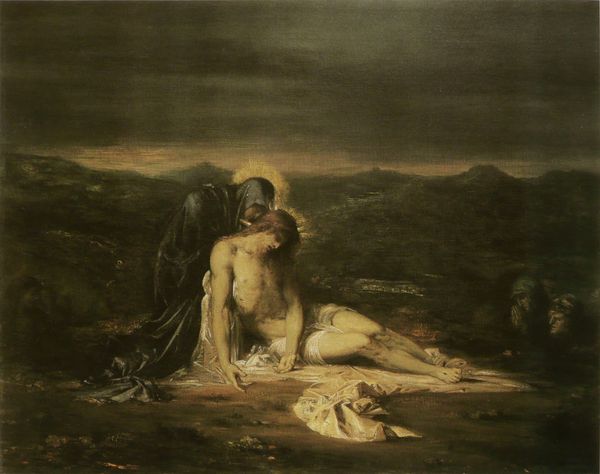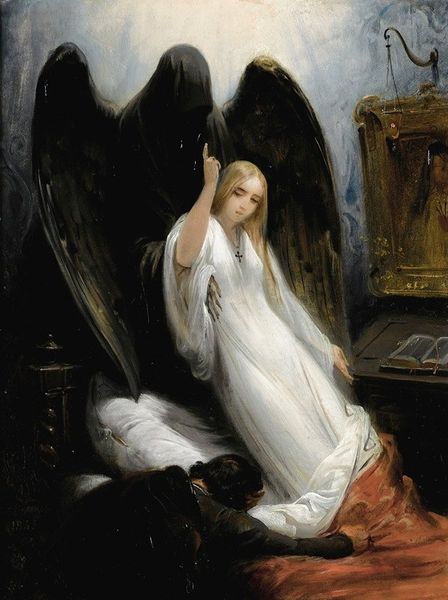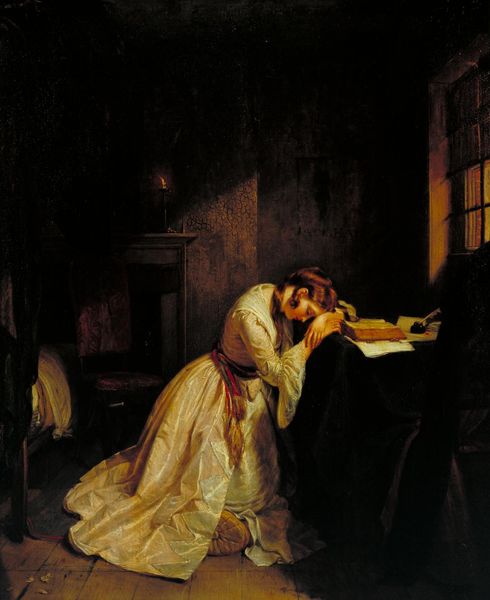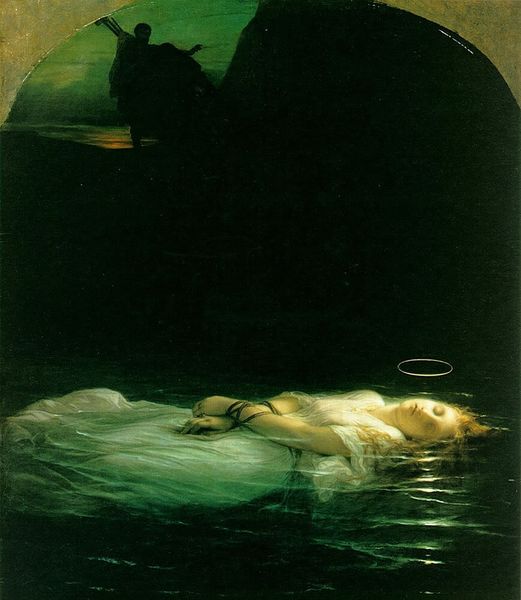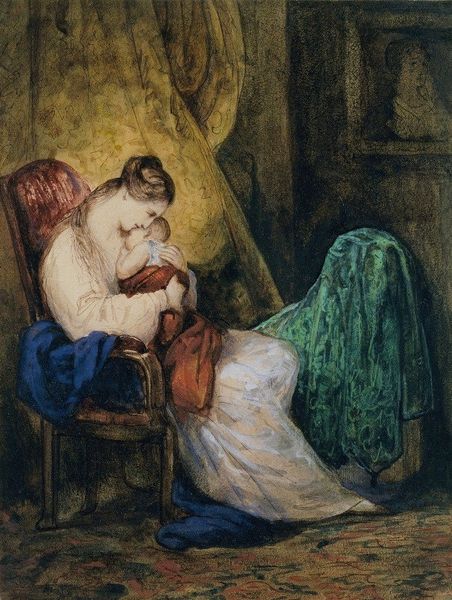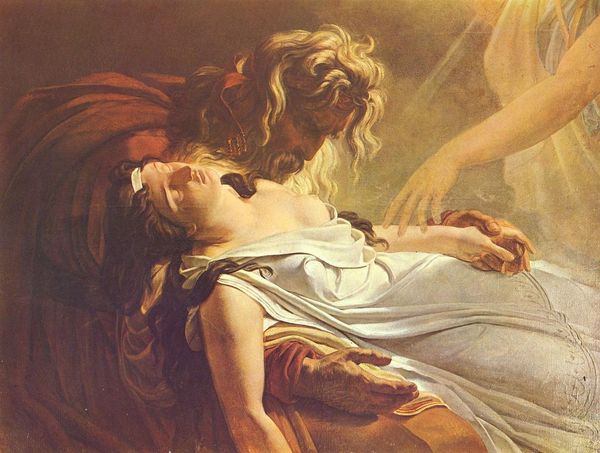
Copyright: Public domain
Konstantin Egorovich Makovsky painted "Tamara and Demon", a piece inspired by a poem of the same name written by Mikhail Lermontov. Makovsky, working in late Imperial Russia, presents us with a narrative steeped in the era's fascination with the exotic and the mystical. The painting depicts a scene of intense drama and forbidden love, reflective of the societal constraints and moral anxieties of the time. Tamara, a mortal woman, is embraced by the Demon, a fallen angel, highlighting themes of temptation, sin, and redemption. We see here an intersection of power dynamics, as the demon’s embrace of Tamara becomes a potent symbol for the dangers of transgression. The composition, with its stark contrast between light and shadow, reinforces the emotional turmoil and spiritual conflict inherent in their relationship. The icons in the background serve as a reminder of the traditional values against which this passionate, yet doomed, affair is set. "Tamara and Demon" captures the complex interplay between desire and morality, reflecting a society grappling with changing values and the allure of the unknown.
Comments
No comments
Be the first to comment and join the conversation on the ultimate creative platform.
